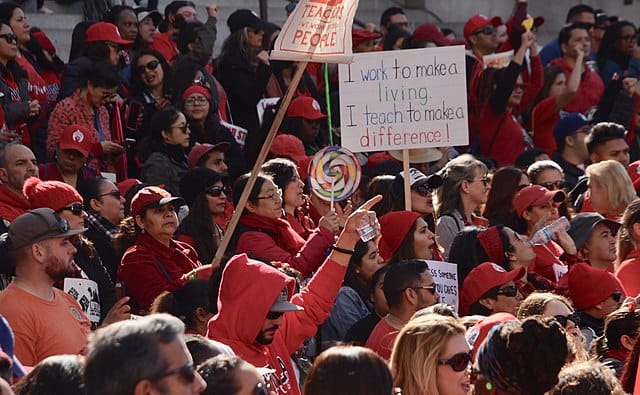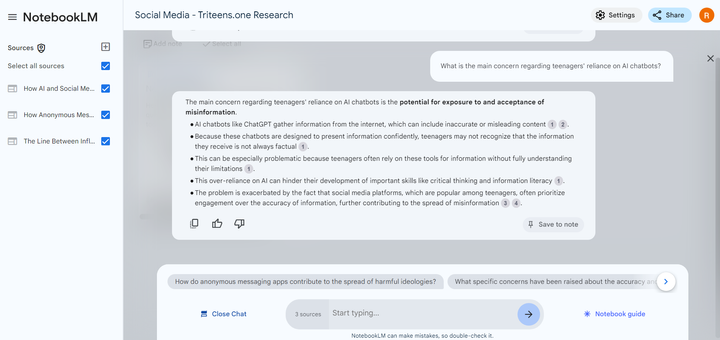From teachers' strikes to overcrowding: The struggles of students and teachers today
"All educators deserve to come home alive," says Erin Hodel, a teacher from Indiana on NEA Today

IThe following article covers sensitive topics that may be uncomfortable to some readers. Read our content policy for more information.
"All educators deserve to come home alive," says Erin Hodel, a teacher from Indiana on NEA Today. She's among countless teachers and students in the United States who live in fear of experiencing an active shooter incident. Among the latest is a school shooting in Madison, Wisconsin, which makes at the time of reporting, 971 cases of school shootings in 2024. But this is only the tip of the iceberg when examining the true pressure educators have across the country.
In recent years, teachers have begun speaking out about their working conditions with strikes in Jersey City, Los Angeles, and many more school districts. The NEA has reported teachers have been forced to avoid drinking water to reduce bathroom breaks. In their survey of teachers in Orange County, Florida, they found that 20% of teachers had to go to the doctors due to issues with their health from lack of bathroom breaks. “Today, for example, I didn’t get lunch—and I didn’t go to the bathroom for like three hours after I had to go,” one teacher said in the post. For those readers who don't know what the National Education Association (NEA) is, it's a labor union for educators and school workers from kindergarten to college.

A lot of our readers are students, so they might not truly understand the reasons behind why so many teachers go on strike. Usually at the forefront of these issues are wages and funding, but EdWeek has reported that it's expanded to become about helping students as well. Among these has been the Los Angeles teacher's union, which has advocated for community schooling among other social issues. This move was made to garner support from students and families of striking teachers, showing that teacher strikes are not just about teachers, but about students as well.
Teacher's strikes have also received some criticism, with CICS releasing a statement following their strike claiming "With the limited funding that is an unfortunate reality in public education, in order to pay for such a significant salary increase, we will be forced to make certain cuts and compromises. For example, we will likely need to limit the number of instructional coaches, assistant principals, and other valuable support staff members," showing that although striking may seem beneficial, it may have downsides due to funding constraints as well. It's important to note that we have not independently verified these claims.
Another criticism came from Student Voices, where Scott Lee described the outcome of the earlier mentioned Los Angeles teacher's strike. As a student who joined the strike with the teachers, he described the aftermath and how he viewed it as ineffective. He mentioned that labor unions could not deal significant damage to the school district due to a lack of funding and rising costs. Ultimately, the result was that schools remained overcrowded, and he said about the strikes "I can’t see anything worthy of note that came from it," stating his frustrations at the inadequacy of the results.

Lee's article also went on to bring to attention the lack of political and legislative action taken to assist teachers and improve working conditions. While labor unions do hold some power, the law holds an even higher power. This highlights that the fight for improving teacher and student conditions across the country may reach farther than labor unions, but reach to congress.
We've talked a lot about conditions for teachers in this article, but we haven't quite addressed the conditions that students face in schools. Underfunding and overcrowding are some of the top issues facing students. According to a report by The Century Foundation, the United States is underfunding schools by about $150 billion annually. This doesn't just affect teachers but affects students as well. The article states that about 30 million schoolchildren will suffer from underfunding schools.
In the report, they found majority of Black or Latinx schools suffered the most, and that low-income school districts are twice as likely to have funding gaps. Among the states with the highest gap in per pupil spending were Arizona, Nevada, and California. In addition, the study found that the largest funding gaps were in schools with almost all Latinx populations. This report brings to attention the gaps in student care that exists within the United States. It's important to note that these issues also translate to increased pressure on teachers as well.

In the map above that I acquired from Education Week from the U.S Census Bureau, I noticed that like the report, southern states experienced more funding issues than northern states. Of course, I focused on my home state of New Jersey, which had a higher-than-average spending per student. A lot of areas had more than 33% of the national average of per pupil spending. The reason for all of this? New Jersey is one of the wealthiest states in the country, with U.S. News & World Report ranking it the wealthiest state in the country with a median household income of $96,346. Pair that with high property taxes, creating extra funding for schools with 54.2% of county taxes spent on schools. That's $17.5 billion in local taxes that aid in funding the schools in New Jersey.
The economic differences in the communities with more versus less funding highlight the core issue of underfunding: it's become a game for the rich. States like New Jersey prosper in education due to just how much money is present in the residents' wallets. Take a look at Mississippi on the map, which has the highest poverty rate according to U.S News & World Report, and you will notice how almost all of the state is spending below the national average. Louisiana the state ranked 2nd for poverty, is a little bit better with spending, but still below average or average spending.

Overcrowding is also a leading problem in the United States as Lee's Student Voices article described. High student-to-teacher ratios make it difficult to provide individual education, control noise levels, and increase behavioral issues among many other things. The U.S. Government Accountability Office also found that some states had poorly maintained school buildings with inadequate infrastructure. In addition, the NAEP found that schools without overcrowding had significantly higher academic performance.
Conclusion
For both teachers and students, schooling has become a struggle in many aspects. Teachers have long protested the working conditions, and now strikes have begun to demand benefits for students as well. Despite this, the effects of teacher's unions and their strikes have been called into question by many sources and articles. While teachers are suffering from underfunding, overcrowding, and low wages, students are also suffering across the country. In our research we found 30 million schoolchildren will not receive enough funding for an education, states with high poverty often have low per pupil spending, and that many states across the country to not have adequate facilities to handle all their students. I hope this article brought to attention some core issues in schooling and made you more aware of whats happening around you at school.
If you have questions or comments for me or find an issue with this article feel free to email me at [email protected] or DM us on Instagram below!

Triteens Media is THE media outlet for teenagers. Stories and journalism you can trust. We report on what matters. Follow us if you want amazing reporting coming straight to your email!




